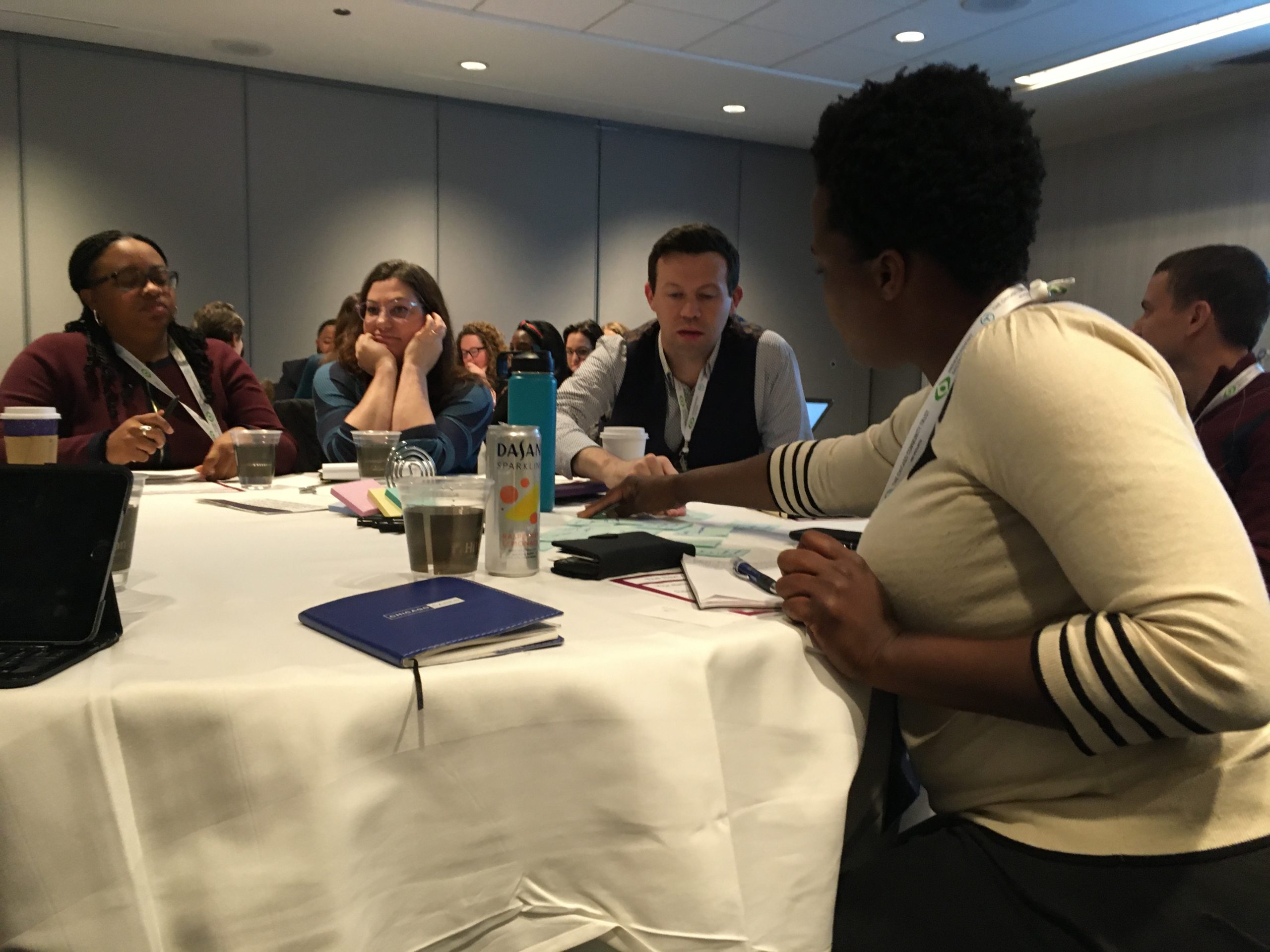As a former executive director, I have always seen the value of peer support and understand how hard it can be to make time for in the day to day pressures of one’s position. The group that I have facilitated under the umbrella of the Testing Change project over the past year has confirmed the value of these type of groups. If you are considering organizing or joining a group, this post shares some experiences and ‘lessons learned’ from the Testing Change project as well as Pledge4Change2030 the Commonwealth Study Conference and the Fito Network.
Some of the value of peer learning and support:
- Support for professional challenges; sharing learning and experiences and new ideas and tools;
- Provides designated time for reflection – hard to come by for busy leaders;
- Can help minimize burnout as there is a place to share common challenges and frustrations and develop solutions and ways forward;
- After the peer learning group runs its course, an alumni group of peers to continue to consult.
Some lessons learned around organizing and running peer learning/support groups:
- Composition of group
- A good size for a virtual community, or one where you will have limited time together (eg 2 hours or less) and no ‘hallway or break time’ is 6-8 people, such as the Testing Change groups have been. That size allows for a robust dialogue with different perspectives and ideas being shared, while allowing time for everyone to participate. If there is more time to meet and bond, a larger group, such as the 15-20 the Commonwealth Study Conference (CSC) uses “gives more chance of someone having come across a particular problem or opportunity before” as Peter Moore who works with this group notes.
- Gathering a group of leaders that might not normally come together is a unique opportunity and provides clear value-added in learning, information, and sharing advice and perspectives that participants might not otherwise have access to. There should however be enough commonality in order to share relevant experiences and advice, such as a reasonably similar stage in careers and/or level of responsibility. Value can come from a group made up of practitioners from one sector with common challenges, such as the Testing Change project and Pledge4Change which focused on NGOs, colleagues within a large organization, or from mixing people from government, private sector, NGOs, and academia such as the CSC.
- Goals and expectations
- Be clear about the goals of the group. Brendon Johnson of the Fito network describes a clear and simple purpose of peer learning groups as “to get advice from peers for questions you face, while building deep relationships.”
- Set a defined timeframe for how long the group will last – people won’t commit indefinitely but they may be willing to give their full commitment to a more specified period of time. Depending on the goal of the group (sharing advice vis a vis a common goal to accomplish) this could be anywhere from six months to two years.
- Busy practitioners may need to miss a meeting from time to time (sharing minutes can help to keep everyone up to date) but if someone lapses for a number of meetings it may affect their relationship with the group and the group may not be the best match for them at the current time.
- Having a commitment to each other can help with accountability, effective dialogue and eventual outcomes.
- Agenda/Focus
The group can focus on a particular goal, such as the PledgeforChange group, or a combination of a common goal (navigating change) and individual professional challenges (such as the Testing Change group). Peter describes the CSC alumni group as “mixing mind-stretching exposure to new ideas, with mutual help sessions.”
- How the group will operate
- In the past few years we have all found that peer relationships can be developed virtually. One of our learnings about virtual groups, though, is that you can start them and bond virtually but you need to be very intentional about doing so, allowing time for personal sharing and relationships among group members to develop. For example with the Testing Change group, we started each meeting with one member leading some type of ‘get to know you ‘activity. Of course, it can be a great boost to a virtual group’s longevity and effectiveness if it can meet face to face at some point. The Testing Change group, which worked for two years virtually before we had the resources to meet in person, found both that we were effective virtually and that the in-person meeting gave us some new momentum and strengthened relationships.
- The group can decide how often they will meet and what their agenda will be. The Testing Change and Pledge4Change groups met once a month, with the Testing Change group switching to bimonthly.
- Having an organizer/facilitator can minimize the time that busy practitioners need to put into this aspect of a group, allowing participants to fully participate if they don’t needs to facilitate and can help to keep the discussion focused. Scheduling always takes time (oh, the joys of scheduling!) and can also be an important role of a professional coordinator. There can, of course, be some costs to having a professional organizer/facilitator.
- Selecting an appropriate social media/online platform to support the group can also be helpful. The CSC alumni organize around LinkedIn; the Testing Change group has used a Google folder for storing shared documents such as meeting notes and updating their test progress.
- As everyone is busy, it can be useful to send out calendar invites, and send a reminder (perhaps with the agenda and any readings) a week prior to the meeting.
Finally shares Rose Caldwell, CEO Plan UK: “Working with the CEO’s of the Pledge for Change INGO’s over a two year period has been invaluable. In equal measures it has helped me validate my thinking, whilst at the same time challenging my understanding and pre-conceived views. Creating a safe space for open and honest dialogue has forced me to lean into challenges and as a result encouraged me to be bolder.”
Additional resources
Tools: Peer assist, Troika consulting, Case clinic Working Out Loud

